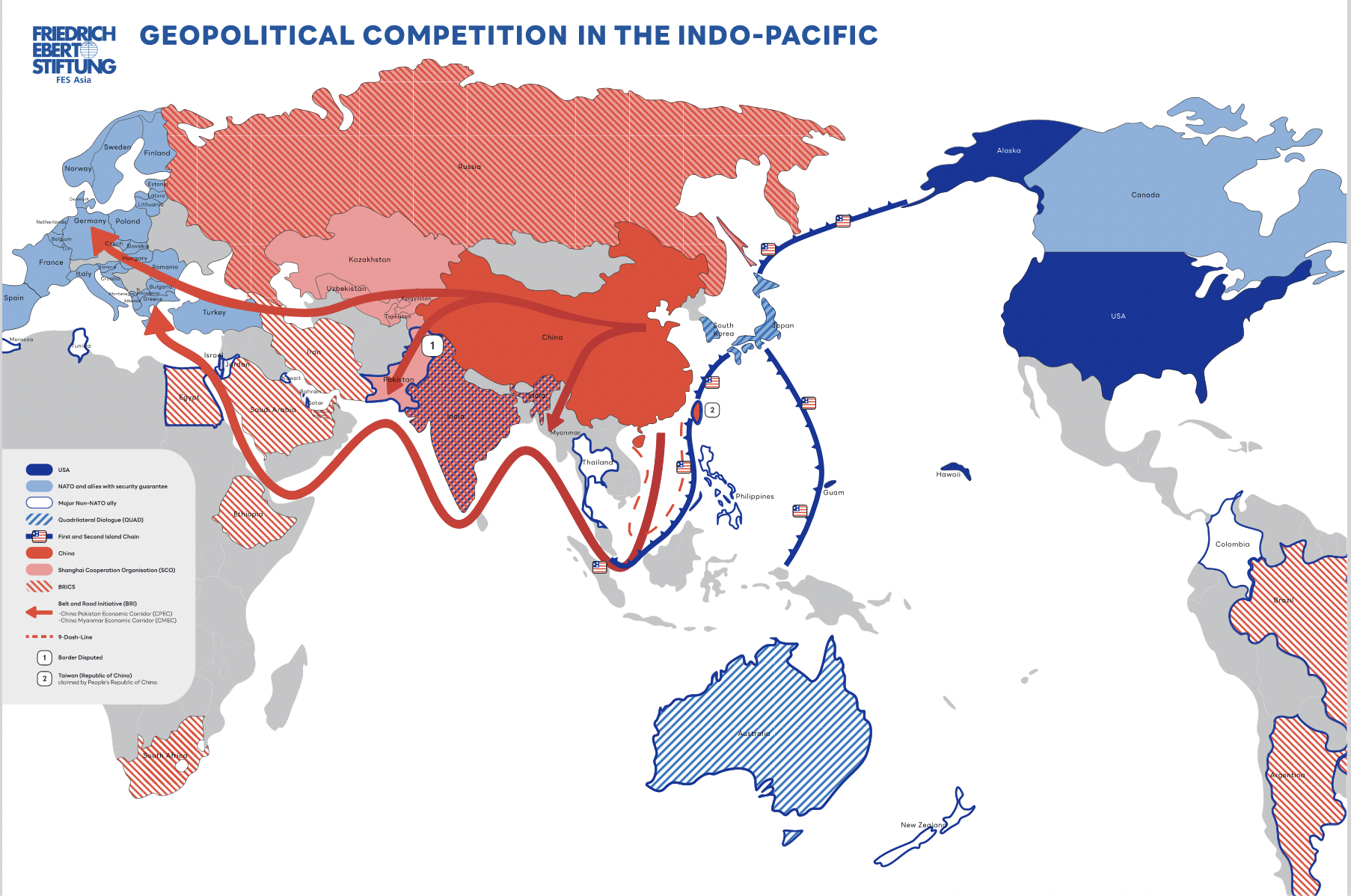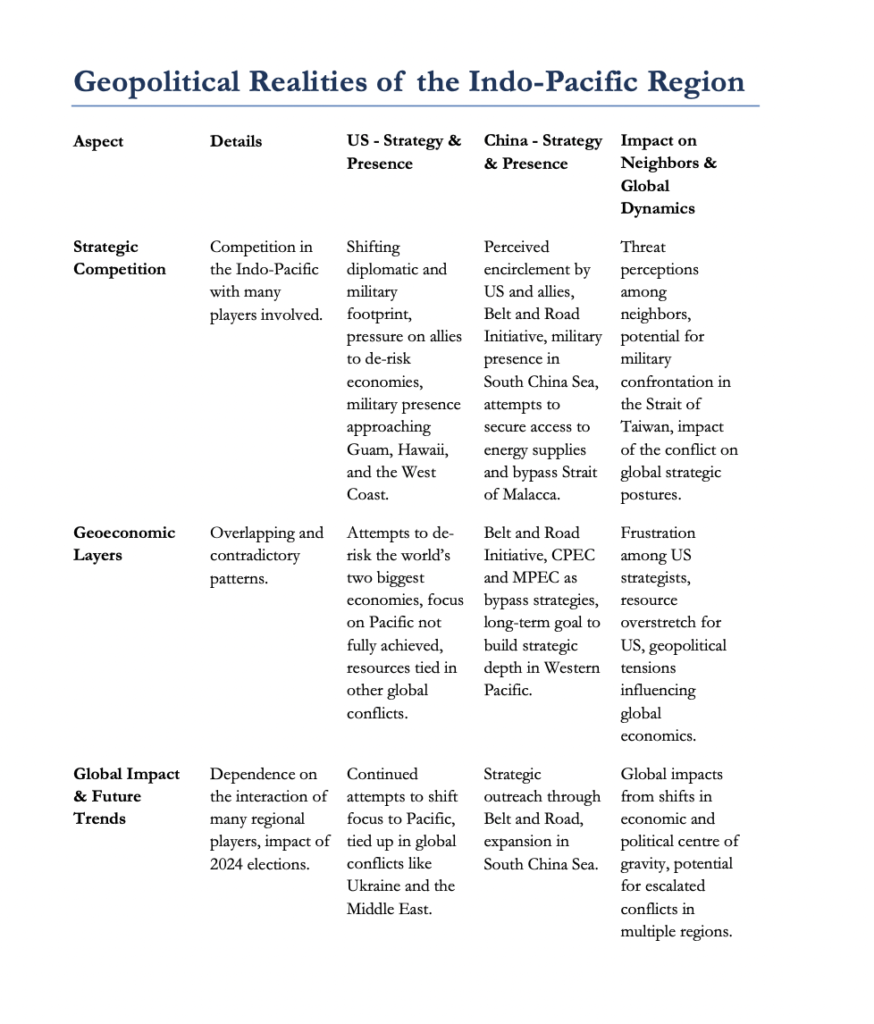
Rabia Akhtar
https://asia.fes.de/news/geopolitical-competition-indo-pacific
Take a look at the fascinating map depicting the geopolitical competition in the Indo-Pacific created by FES Asia. The table below “Indo-Pacific Geopolitics: Power, Presence, and Partnerships” has been generated to better understand this map. It offers a depiction of the strategic rivalry and interactions between the United States and China within the Indo-Pacific region. It breaks down their strategies into military presence, economic initiatives, and diplomatic efforts, highlighting how each country is positioning itself for advantage. The table details China’s efforts to circumvent perceived containment by the U.S. through projects like the Belt and Road Initiative and military expansion in the South China Sea, aimed at securing trade routes and asserting regional influence. Conversely, it outlines U.S.’s reorientation towards Asia, emphasizing diplomatic and military engagements to counterbalance China’s rise and protect its interests and those of its allies. The table also reflects on the broader implications of this competition for neighboring countries, who are caught in the crossfire of these great power dynamics, potentially leading to tensions and conflicts, especially in flashpoints like the Taiwan Strait. Together, the map and this table conveys the complexity of geopolitical strategies, alliances, and the shifting balance of power in a region critical to global stability and prosperity.
Table based on the FES Asia map is created by: Rabia Akhtar, Editor Pakistan Politico





